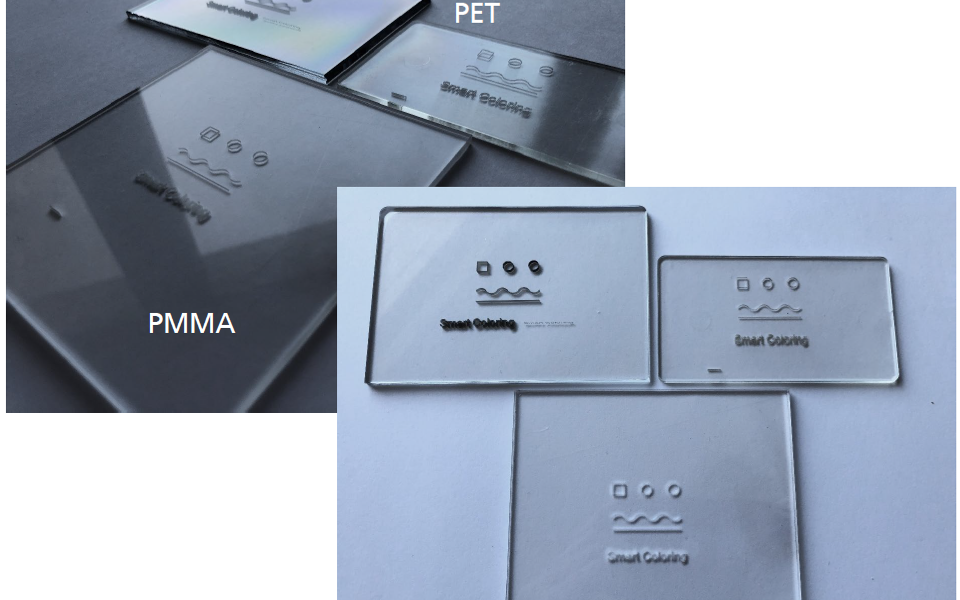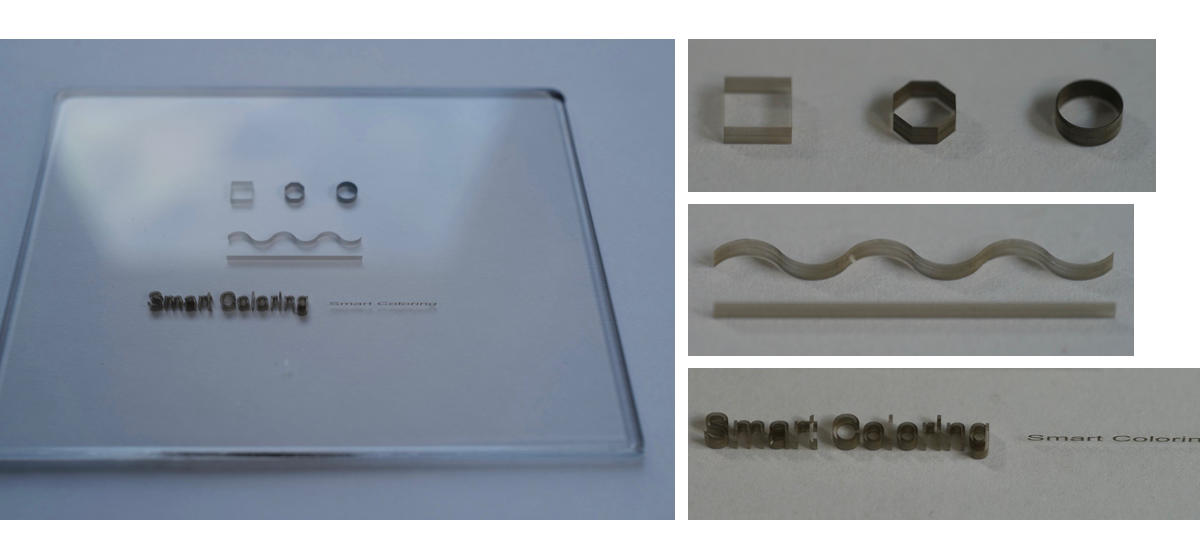
Dr. Bernd Robertz
Managing Director
+49 174 279 64 65
bernd.robertz_at_smart-coloring.de
LASER DEEP PRINTING
An effective method to introduce light shielding into transparent plastics.
Light shielding in backlit components avoids light bleeding into neighboring operating elements.
- Laser Deep Printing requires no laser-absorbing additives for modification at depths of up to several mm.
- Laser Deep Printing requires no changes in the process flows as it takes place at the very end of the manufacturing process.
- Laser Deep Printing can efficiently introduce homogeneous light shieldings into transparent plastic components at reasonable speed and costs.
- Light shieldings effectively reduce the transmission to below 35%. Several light shieldings in a row further reduce transmission.
- Plastics: PC, PMMA, PET, ...
Light shielding in backlit components are usually created by elaborate 2-color back injection molding. Laser Deep Printing opens up significant cost savings in terms of
- Investment in machine (1K instead of 2K)
- Energy
- Tool costs
Insights into Smart Coloring´s
Laser Deep Printing
Location-controlled focussing of ultra-short pulsed lasers creates visible dots, lines, areal and even complex geometric structures/shapes in transparent plastics.
Modified structures are built from the bottom up. Single pulse processing leads to separated structural elements.
The effect of spherical abberation leads (without a corresponding corecture) to an expansion of the introduced structure in the z-direction. The expansion in x,y direction remains unchanged.
Minimum structure sizes in x,y, and z-direction are about 2µm.
Laser Deep Printing - Variables
- Puls duration [ps]
- Puls energy [nJ]
- Feed motion [mm/s]
- Puls distance [µm]
- Repetition rate [kHz]
- Depth z [mm]
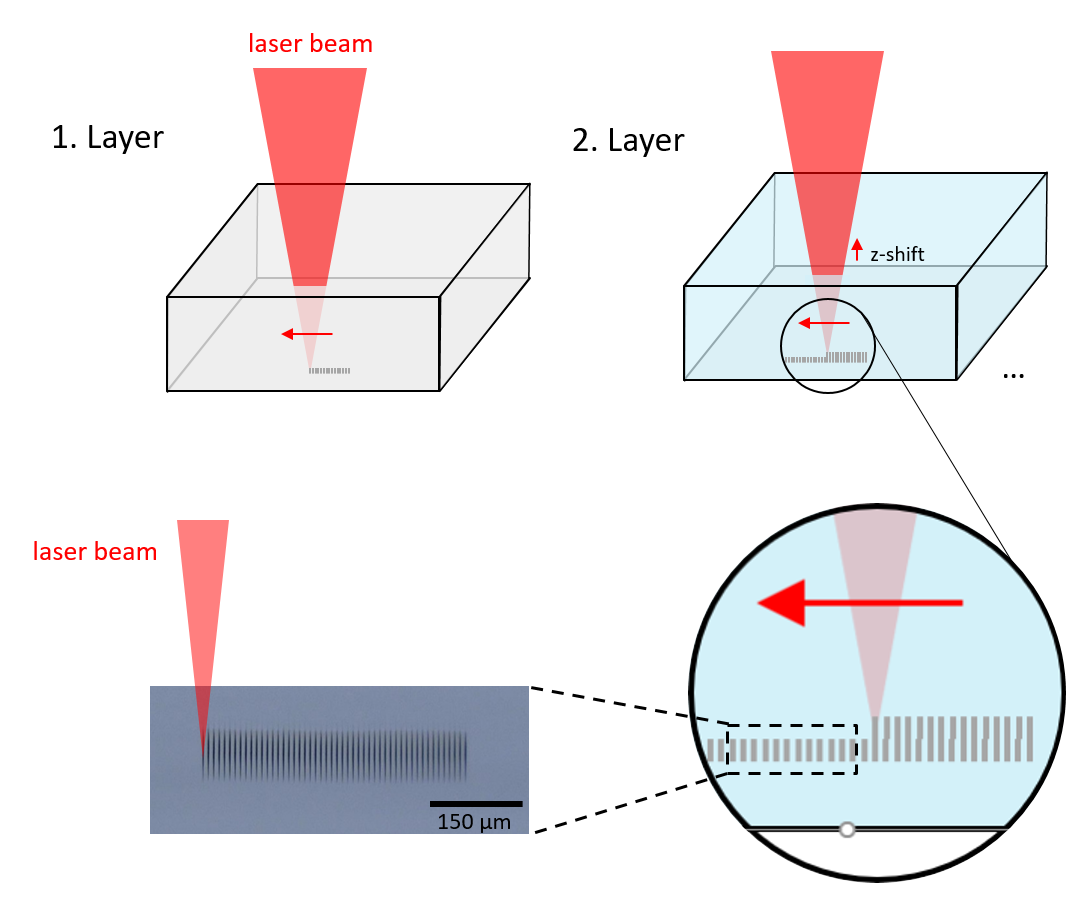
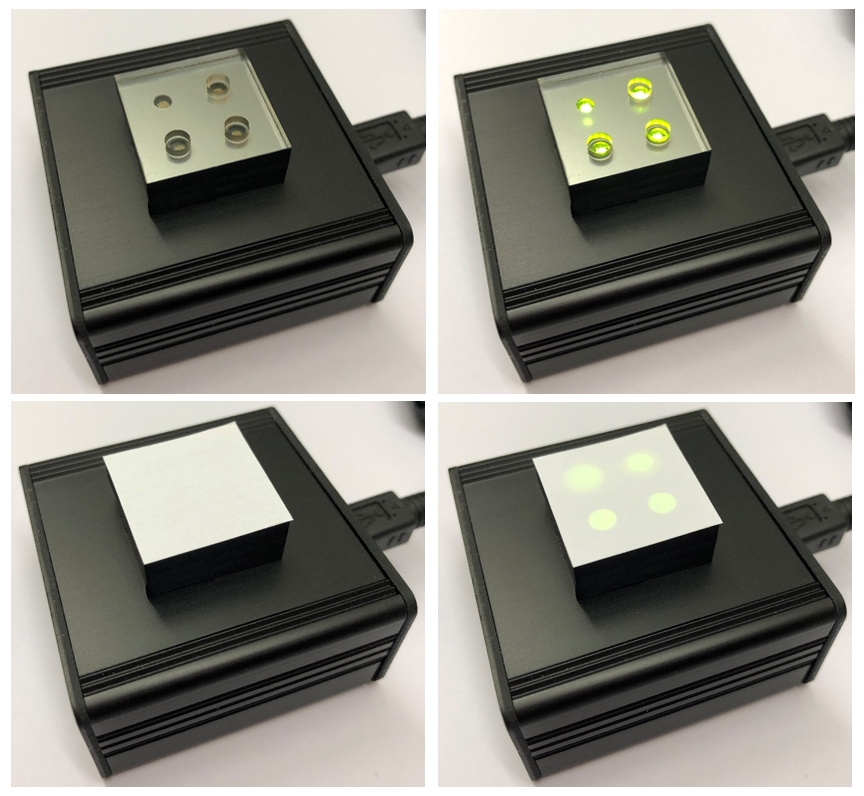
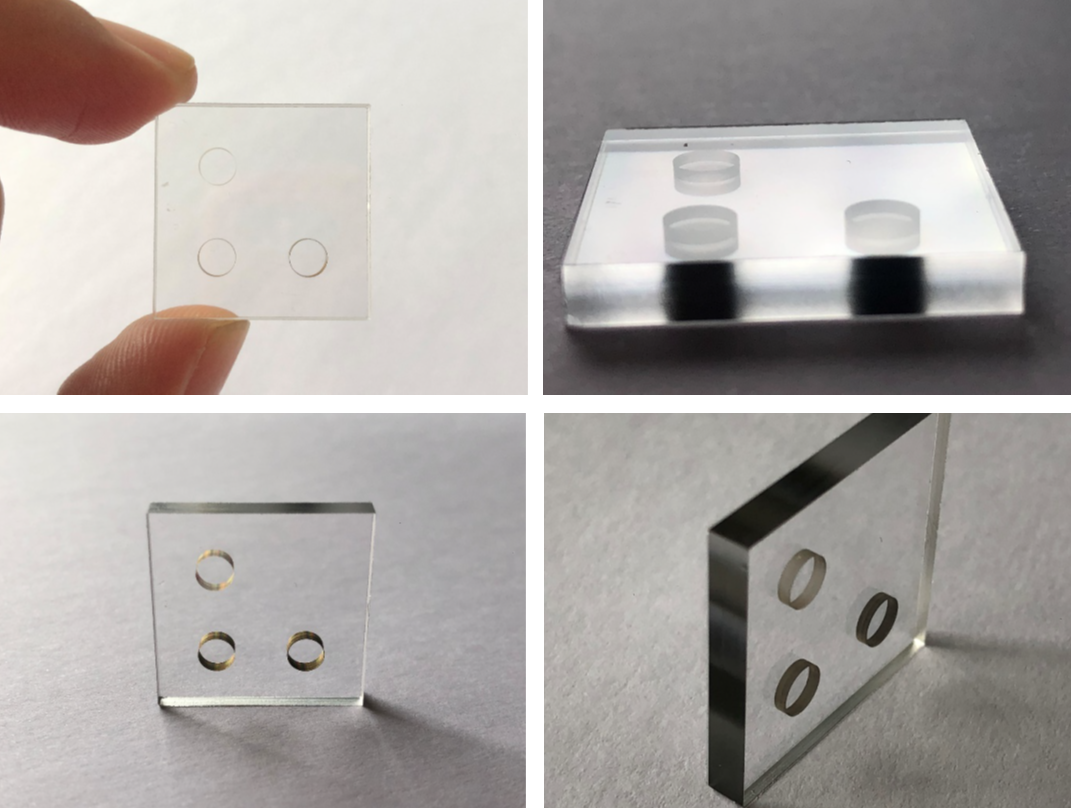
Cage-like or tubular structures act as a light shielding to prevent over-illumination into neighbouring areas.
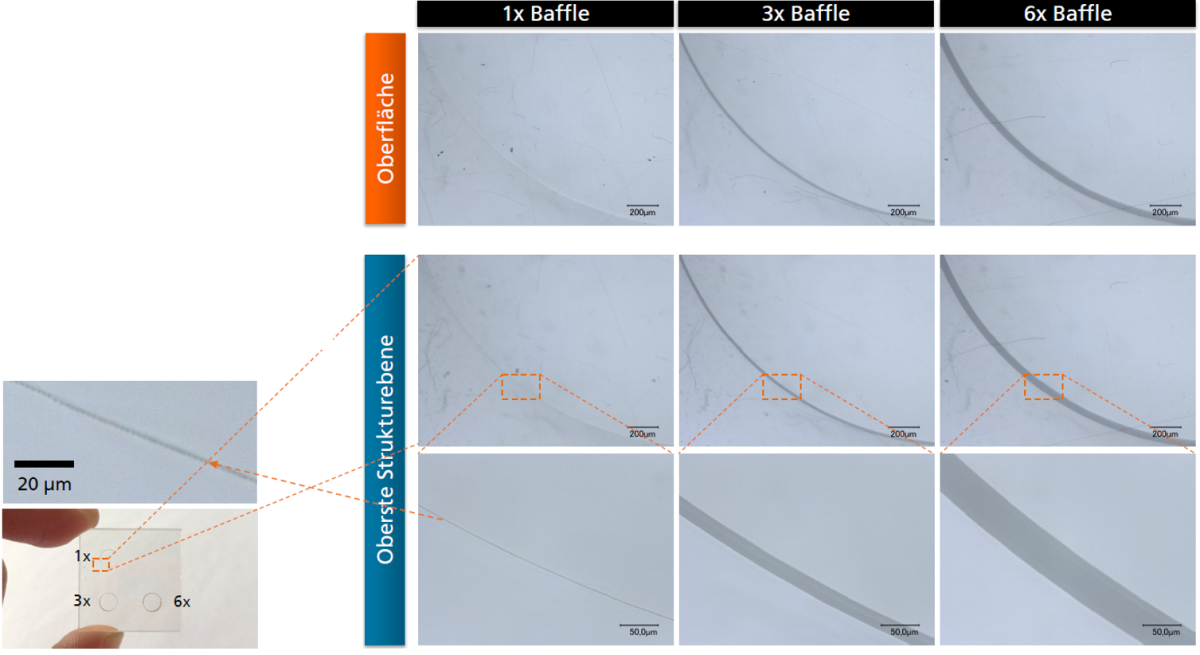
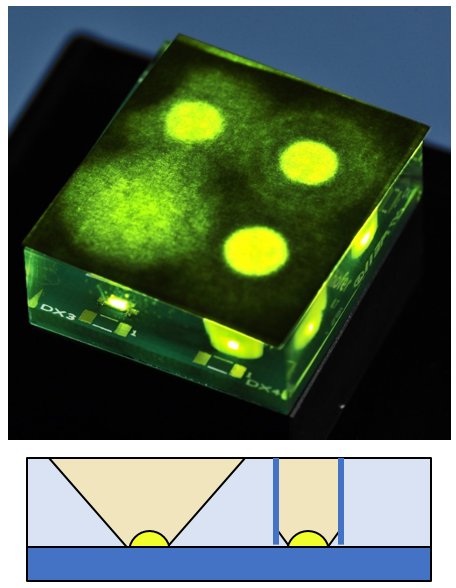
The light barriers were introduced into various transparent plastics
- In all plastics, these structures were achieved without the addition of laser-absorbing additives.
- The highest darkening was achieved in PC.
- In PET a medium dark coloration was achieved.
- In PMMA, light/white structures were achieved
